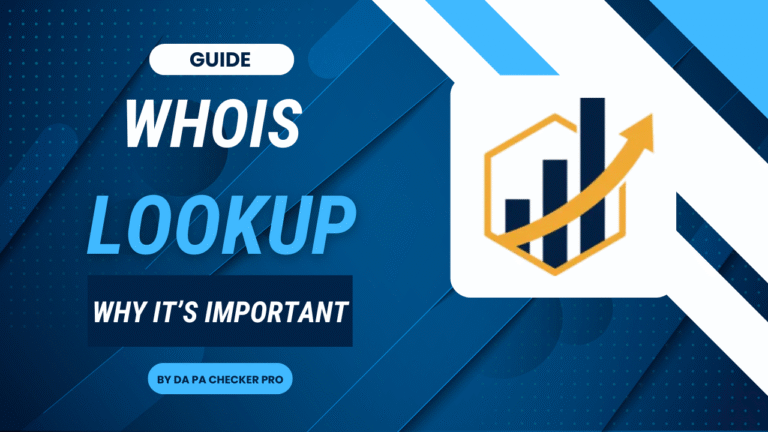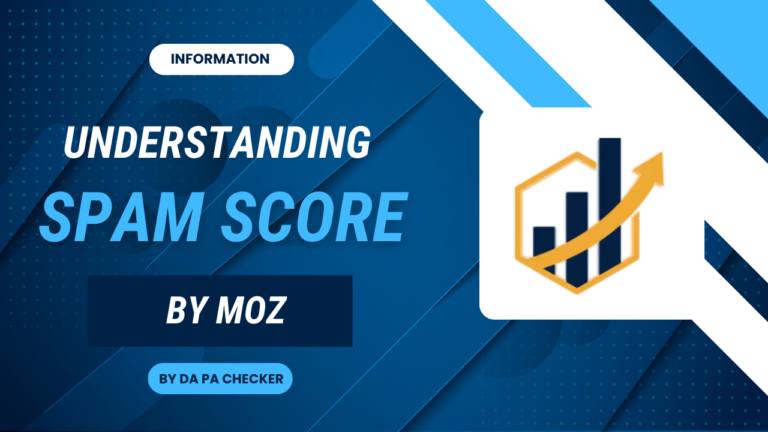In the ever-evolving world of SEO, website owners and marketers must stay informed about the factors that affect their site’s search engine rankings. One such important metric is the Spam Score, developed by Moz, which plays a crucial role in evaluating a website’s likelihood of being penalized by search engines like Google. Understanding what Spam Score is, how it works, and its implications can significantly improve your SEO efforts.
What is Spam Score?
Spam Score is a metric developed by Moz, a leader in SEO tools and research, to help website owners gauge the risk of their site being penalized by search engines due to spammy or black-hat SEO practices. The Spam Score is calculated based on several factors that indicate the likelihood of a website being associated with spammy behaviors, such as unnatural link patterns, suspicious or low-quality content, and other red flags that Google’s algorithms may associate with potential penalties.
Moz developed this tool after analyzing over 17,000 websites that have been penalized by Google. The score is presented on a scale from 0 to 17, where a higher score indicates a greater chance that the site may be deemed spammy by Google. A Spam Score of 0 signifies a clean, penalty-free site, while a score closer to 17 suggests a higher probability of ranking issues due to spam-related activities.
How is Spam Score Calculated?
The Spam Score algorithm uses a variety of factors to determine the likelihood of a website engaging in spammy practices. Here are the key components that contribute to Spam Score:

- Link Profile Quality: Websites with unnatural or spammy backlink profiles are more likely to receive higher Spam Scores. Links from low-quality, irrelevant, or suspicious sources (such as link farms) can severely damage a website’s reputation in the eyes of search engines.
- Anchor Text Patterns: Overuse of exact-match anchor text or keyword-stuffed links can signal manipulative linking practices, which could increase the Spam Score.
- Content Quality: Thin, duplicate, or keyword-stuffed content often leads to a higher Spam Score. Websites that engage in content scraping or publishing low-quality articles are at risk of being marked as spam.
- Toxic Linking: Websites that are linked to from known spammy sites or those associated with black-hat SEO tactics may have a higher Spam Score, indicating the possibility of spammy behavior.
- Technical SEO Issues: Certain technical issues, such as the presence of malware or security vulnerabilities, can also contribute to a higher Spam Score. Sites with frequent redirects or broken links may also be penalized.
Why is Spam Score Important?
Spam Score directly affects a website’s SEO health and its ability to rank well on Google and other search engines. Sites with high Spam Scores are more likely to experience the following issues:
- Reduced Search Rankings: Google’s algorithm penalizes websites that engage in spammy practices. A high Spam Score is often a signal that a site may face ranking drops or complete removal from search results.
- Lower Trustworthiness: Websites with high Spam Scores may appear untrustworthy to visitors, negatively affecting user experience and engagement.
- Increased Risk of Penalties: Websites that use manipulative SEO tactics may face manual actions or penalties from Google, which can significantly harm organic traffic and business outcomes.
How to Check Your Spam Score
To check your website’s Spam Score, you can use Moz’s Link Explorer tool, which provides an in-depth look at your website’s backlink profile, including the Spam Score. By regularly monitoring this score, you can identify potential SEO issues early and take steps to mitigate risks before they impact your rankings.
- Moz Link Explorer: Moz’s proprietary tool provides detailed information about backlinks, domain authority (DA), and Spam Score. To access it, visit Moz Link Explorer and enter your domain or For bulk Check You can check on Bulk DA PA Checker.
- Google Search Console: While not directly providing a Spam Score, Google Search Console can highlight manual penalties or warnings regarding your website’s health, giving you insights into potential issues related to spam.
How to Reduce Your Spam Score
If your website has a high Spam Score, there are several strategies you can employ to improve it and ensure better long-term SEO health:
- Disavow Toxic Backlinks: If your backlink profile contains spammy or low-quality links, use Google’s Disavow Tool to tell Google not to count these links toward your site’s ranking.
- Improve Content Quality: Focus on producing high-quality, original, and useful content for your visitors. Avoid keyword stuffing and ensure your content is informative, engaging, and aligned with your audience’s search intent.
- Audit Your Link Building Strategy: Avoid manipulative link-building practices. Instead, focus on earning backlinks from high-authority, relevant sites in your industry. Tools like Moz’s Link Explorer can help you track your link-building efforts.
- Fix Technical Issues: Ensure your website is free from technical problems, such as broken links, redirect chains, or malware. Regularly update your website’s security and monitor for any potential issues.
- Conduct Regular SEO Audits: Regular audits can help you identify potential spammy behaviors or areas that need improvement. Tools like SEMrush or Ahrefs offer comprehensive site audits that can help you stay on top of SEO best practices.
Conclusion
Spam Score, developed by Moz, serves as an essential metric to evaluate the health of your website’s SEO efforts. By understanding what contributes to your Spam Score and taking proactive steps to reduce it, you can improve your website’s chances of maintaining strong search rankings and avoid penalties from Google. Regularly monitoring and optimizing your website based on Spam Score insights ensures that your SEO practices align with Google’s quality standards, enhancing your website’s trustworthiness, visibility, and user experience.






